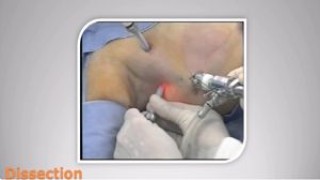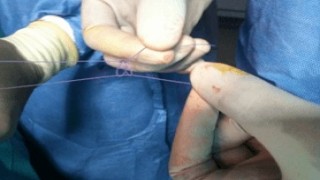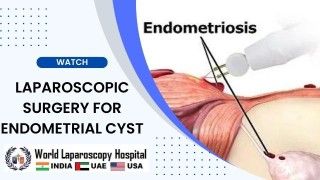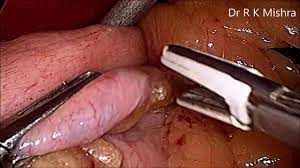Mastering the Laparoscopic Roeder's Knot
Add to
Share
1,420 views
Report
2 years ago
Description
Mastering the Laparoscopic Roeder's Knot is an essential guidebook for surgeons seeking to improve their suturing skills and proficiency with laparoscopic procedures. This book focuses specifically on the Roeder's Knot, a versatile and reliable knot used in laparoscopic surgeries for securing sutures in a variety of tissues. The book provides a comprehensive overview of the laparoscopic Roeder's Knot, including step-by-step instructions for tying the knot and variations for different surgical scenarios. The guidebook also features detailed illustrations and photographs to help surgeons visualize the technique and gain a deeper understanding of the suturing process. In addition to practical instructions for suturing, the book also covers important topics such as choosing the right suture material, selecting the appropriate needle, and maintaining optimal tension during the suturing process. With this guidebook, surgeons can learn to master the Roeder's Knot and achieve greater precision and efficiency in their laparoscopic procedures, ultimately leading to improved patient outcomes. Laparoscopic surgeries have revolutionized modern medicine, allowing for minimally invasive procedures that offer faster recovery times and reduced scarring compared to traditional open surgeries. However, laparoscopic procedures also require advanced suturing techniques due to the limited space and visibility inside the body. The Roeder's Knot is a popular knot used in laparoscopic procedures to secure sutures in a variety of tissues, including skin, fascia, and muscle. The knot is named after Dr. Roger Roeder, a renowned surgeon who pioneered laparoscopic surgery techniques in the 1980s. Mastering the Laparoscopic Roeder's Knot is a comprehensive guidebook that aims to help surgeons improve their suturing skills and proficiency with laparoscopic procedures. The book is written by experienced surgeons who have spent years perfecting their techniques and sharing their knowledge with fellow surgeons. The guidebook begins with an introduction to the Roeder's Knot, explaining its history, advantages, and key features. The authors then provide step-by-step instructions for tying the knot, including tips for achieving optimal tension and avoiding common mistakes. The book also covers a range of variations on the Roeder's Knot, including different techniques for tying the knot in different tissues and for different surgical scenarios. The authors provide detailed illustrations and photographs to help surgeons visualize the process and gain a deeper understanding of the suturing technique. In addition to practical instructions for suturing, the guidebook also covers important topics such as choosing the right suture material, selecting the appropriate needle, and maintaining optimal tension during the suturing process. The authors provide expert advice on how to troubleshoot common problems that may arise during laparoscopic procedures, such as suture breakage or improper knot tying. Overall, Mastering the Laparoscopic Roeder's Knot is an essential guidebook for any surgeon looking to improve their suturing skills and proficiency with laparoscopic procedures. With its clear, concise instructions and detailed illustrations, this book is an invaluable resource for surgeons seeking to achieve greater precision and efficiency in their laparoscopic surgeries, ultimately leading to improved patient outcomes.
Similar Videos






